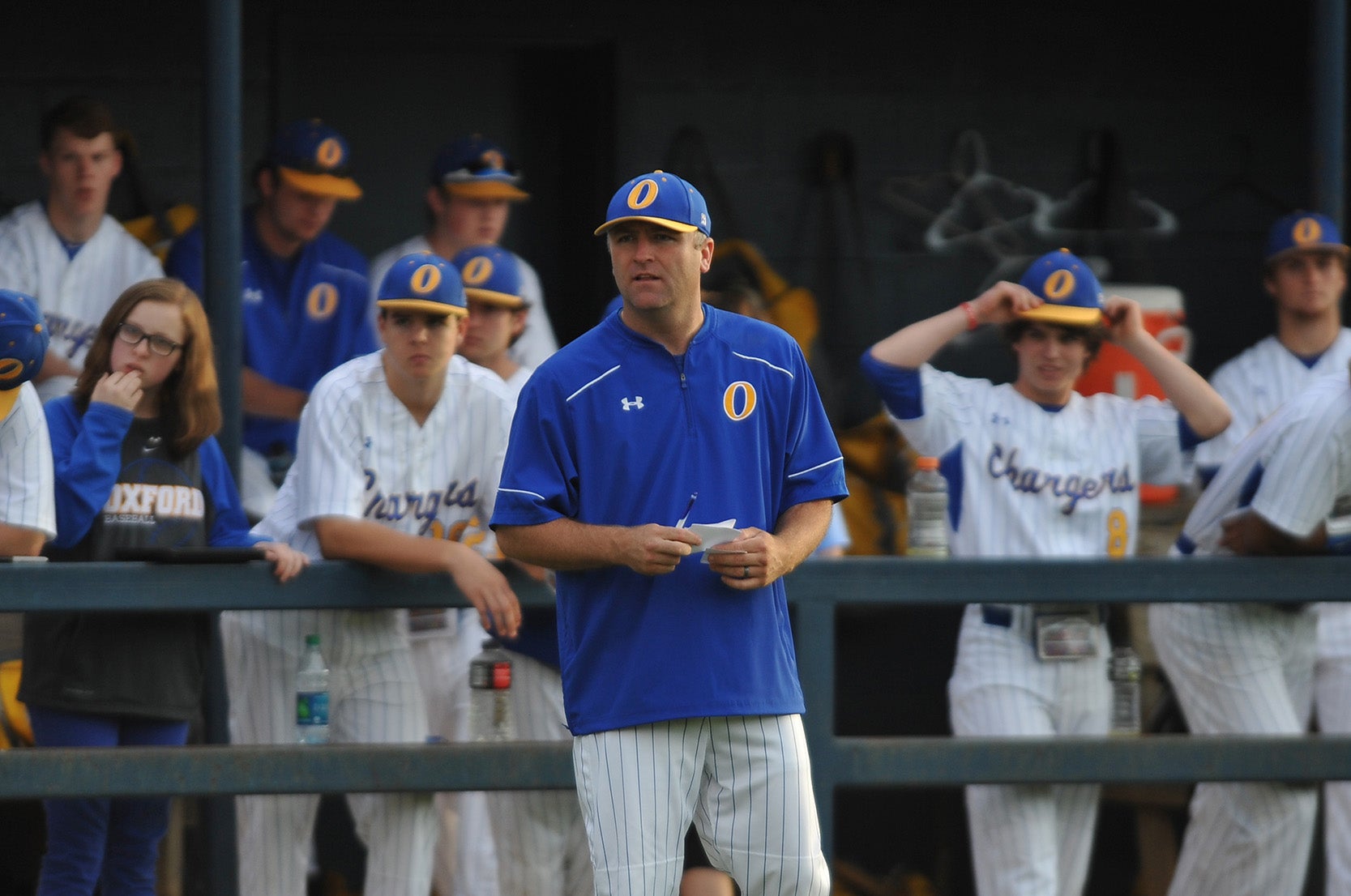What local coaches are saying about the expanded designated hitter rule in high school baseball
Published 2:11 pm Tuesday, July 9, 2019

- Oxford High baseball coach Chris Baughman is adding on another responsibility, joining the football team to coach running backs this fall. (Photo by Bruce Newman)
The National Federation of State High School Associations passed a new rule into effect over the summer, giving high school baseball coaches a few more options for how they’ll call the game.
Rule 3-1-4 will amplify the designated hitter role, expanding the different scenarios in which a DH can be used. There are two such scenarios for when a designated hitter can be utilized.
First, a DH can be what is essentially a 10th starter, hitting for any of the players in the defensive starting nine – the traditional designated hitter. The added part of the rule allows the starting designated hitter to also be one of the nine players starting in the field defensively.
Trending
“It adds so much flexibility,” Lafayette head coach John Walker said. “You have a guy pitching who might throw several innings. Under the old rules, to keep that bat in the lineup you’d have to put that tired pitcher at another defensive position. With that new rule you won’t lose that bat in the lineup.”
Walker presents the obvious scenario the new rule can be used. Under old rules, when your starting pitcher came out of the game, he could no longer hit. Sometimes that led teams to moving that player to a different defensive position just to keep the bat in the lineup. Now that isn’t necessary.
In this sense, the rule has been in effect in college baseball for a while. It’s not used regularly, but a college starting pitcher can also be the team’s DH, leaving him in the batting lineup when he’s pulled. Under the new high school rules, that is an option, but one can also make any defensive player the designated hitter.
Some confusion over this new rule is expected. Not all the coaches have it completely figured out yet. There’s a clinic next week, and among the topics will certainly be hashing out the rules.
“I’ll have questions as far as how it’ll work with some of the re-entry,” Oxford head coach Chris Baughman said. “I think you’ll be able to get really creative with it. But there’s going to be some situations that come up with re-entry rules where, what happens if I pinch hit for a pitcher that was also the DH? There’s some questions that we’ll have to work out for sure.”
One interesting, late game situation where the new rules can be used, is to get better defensive players in the field without sacrificing offense. A team could bring in an improved defensive player to help secure a lead. That certainly helps with one thing high school coaches like to do a lot – get more players in the game. But it’s also easy to see how it could be used to keep the lineups limited. From that sense, it could go either way.
Trending
“I don’t think it changes a whole lot really. It just allows you one more option,” Walker said. “Maybe there will be a situation where you want to put someone who’s better defensively in late in the game but you don’t want to lose the offense so that other kid can still hit. That’s the only real difference is flexibility. Honestly, it might be something we won’t even use, but we have the option to.”
That was the clear, common ground. Both Baughman and Walker emphasized that they liked the changes, but aren’t sure how much their teams will actually take advantage of it. Time will tell how much teams actually utilize the new rule change.
Ultimately, as with any new addition, coaches are just going to have to tinker with it and try new things.
“I’m definitely really interested to see the evolution of how people will use it in a regular game, and then a blowout game. In blowout games you want to get as many people in as you can I think I’ll know how it will work, but I’m still not sure how we’ll work with it to get the most kids we can in,” Baughman said. “I just don’t see it adding that much. But maybe I’m wrong. Maybe it will and I just need to play with it and figure it out.”





